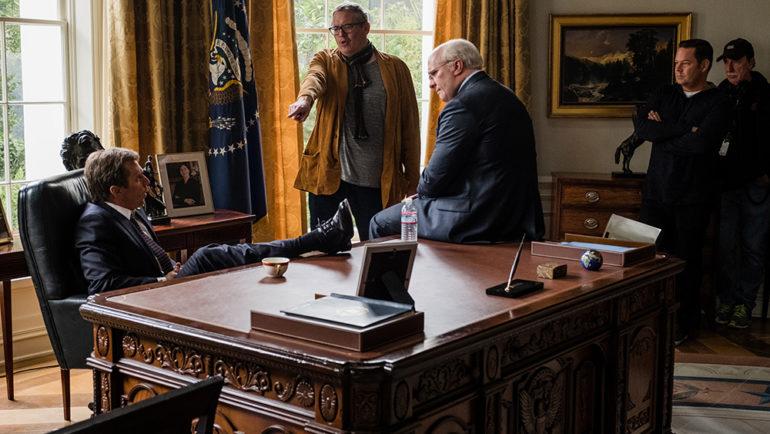Adam McKay Says ‘Vice’ Inspires ‘Most Extreme Reaction of Anything I’ve Ever Worked On’
By Tim Gray
LOS ANGELES (Variety.com) – In “Vice,” writer-director swings for the fences, mixing styles, tone, and techniques for a funny, devastating, and important look at American politics in the 21st century.
“The underlying premise of the movie is, ‘The world right now is uniquely, and potentially catastrophically, in trouble,’” McKay says. “That is never a cool message. Humans always try to maintain a healthy remove, we try to remember that, as shocking as things appear in the moment, we always move on. The underlying statement of this movie is, ‘No, this is uniquely bad.’ I think that offends some sensibilities; some people are like ‘Calm down!’” he laughs.
“I’m trying to do movies that are a conversation with the audience; I’m not making snow-globe movies that are pretty and relaxing to look at.”
The movie examines Dick Cheney, from 1963 to the present. “” is nominated for eight Academy Awards, including three for McKay, as writer, director, and producer. It’s also nominated for a trio of acting performances, makeup, and the complex editing of Hank Corwin.
In the first five minutes, the film covers Cheney’s early years in Wyoming and 9/11 in the White House, cross-cut with images ranging from the Iraq War to head-bangers at a rock concert to blue-collar workers. The film uses intense drama, faux-Shakespearean verse, sitcom moments, still photos, freeze-frames, voiceovers, and other techniques. The audience learns about multiple subjects, including White House protocol, medical procedures, and an explanation of the unitary executive theory.
“There are parts where you’re being deluged with information, then parts where you break form, where you shifts styles and tones,” says McKay. “Some people seem to think the style and act-structure are a mistake. We spent a long time working on those! Life is too short to make a traditional political biopic. It’s more about the time we live in now.”
Editor Corwin adds: “It was a blast to work on, but scary as well, to get the right colors. You would careen from era to era, emotion to emotion, creating hard emotional juxtapositions. It’s the opposite of smooth editing. Flashy editing for its own sake is a terrible thing, but this felt natural — to figure out culturally where we were and where we are.”
McKay praises all his collaborators, including Corwin and DP Greig Fraser, “who really dove into the idea of using a lot of different looks. That includes creating our own ‘stock footage.’ A lot of people wonder how we found some of it, but we always thought, ‘No, we’re going to create our own,’ so we did.”
Cheney was a secretive person, withholding info from his family, co-workers, and the public.
“With this film, it was about trying to relate to the unrelatable,” Corwin says. “You never know what lurks inside of people, even those you’re close to. So we tried to find moments of humanity.”
Asked about McKay’s bending traditional rules, Corwin smiles, “I don’t think he’s cognizant of what the rules are.”
McKay adds that the film has inspired “the most extreme reaction of anything I’ve ever worked on. People gush, ‘I love it! This is what we need!’ or else, ‘I hate this more than any movie I’ve ever seen.’”
He sums up: “The film is basically saying, ‘Maybe what we’re doing isn’t the right path. Let’s look at things from a different angle.’ We’re living in a crazy time. I think our movie broke the glass and pulled the emergency handle. I’ve been told, ‘Something about this movie makes people mad.’ And it should!”

